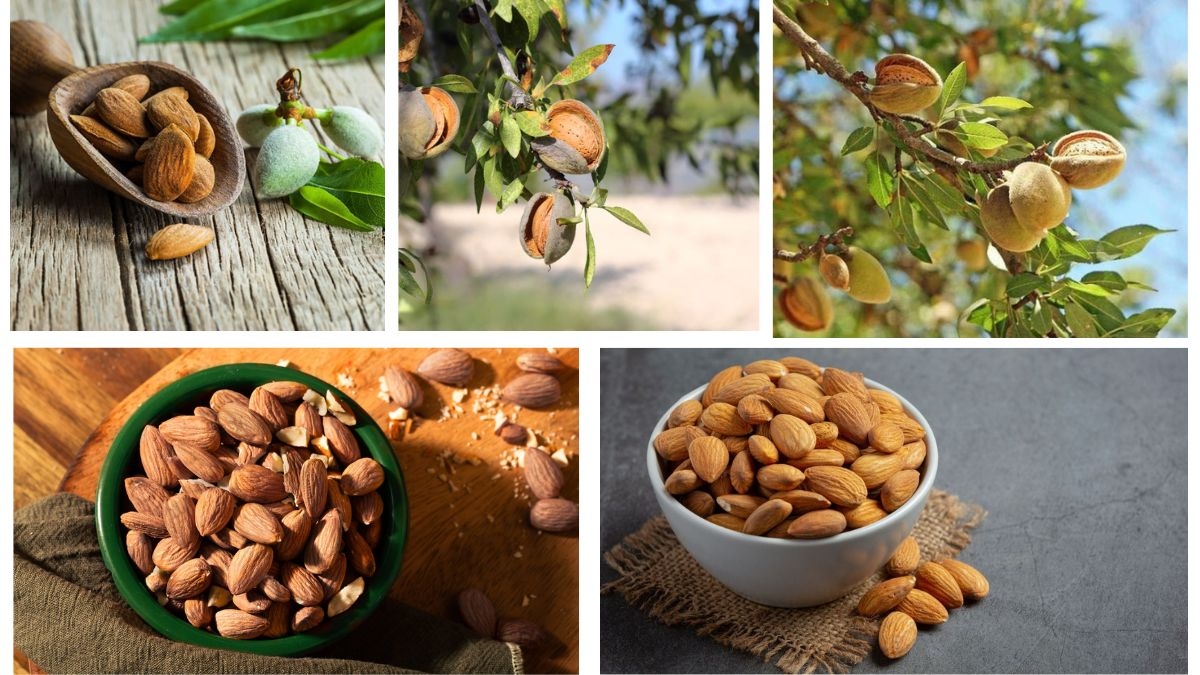Indian almonds, scientifically known as Terminalia catappa and commonly referred to as tropical almonds, sea almonds, or country almonds, are an important yet often overlooked nut variety grown in tropical and subtropical regions. Unlike the more commonly known sweet almonds (Prunus dulcis) cultivated in Mediterranean climates, Indian almonds thrive in hot, humid coastal areas and are valued for both their edible seeds and medicinal properties.
This article explores the global cultivation of Indian almonds, identifies which country stands as the largest producer, and examines the cultural, economic, and environmental importance of this distinctive crop.
An Introduction to Indian Almonds

Indian almonds are native to Southeast Asia, India, and the Pacific Islands but have spread across the tropical world, especially along coastal regions in Africa, the Caribbean, South America, and Oceania. The trees are easily recognizable by their wide, pagoda-like canopy and large, almond-shaped fruits that turn from green to red or yellow as they mature.
The seeds inside these fruits are edible and rich in nutrients, containing proteins, healthy fats, antioxidants, and minerals like magnesium, potassium, and phosphorus. Beyond their nutritional value, Indian almonds have significant uses in traditional medicine, where their leaves, bark, and seeds are employed to treat digestive disorders, skin ailments, and respiratory issues.
Which Country is the Largest Indian Almond Producer in the World?

Based on data compiled from the Food and Agriculture Organization (FAO), regional agricultural reports, and trade records, India itself holds the title of the largest producer of Indian almonds in the world.
India’s vast tropical and subtropical geography, especially its coastal states, provides ideal conditions for cultivating Terminalia catappa. While other countries like Indonesia, the Philippines, Sri Lanka, and several African nations also grow Indian almonds, none match India in terms of total production area, tree population, and harvest volume.
Why is India the Leading Producer of Indian Almonds?

India’s dominance in Indian almond production can be attributed to several interrelated factors:
1. Ideal Climate and Geography
Indian almonds thrive in hot, humid, tropical, and coastal environments. India’s extensive coastline, stretching over 7,500 kilometers, and its varied tropical climates in states like Kerala, Tamil Nadu, Andhra Pradesh, Goa, Maharashtra, and West Bengal create optimal conditions for large-scale cultivation.
2. Cultural and Traditional Significance
Indian almonds have been part of India’s culinary, medicinal, and cultural traditions for centuries. In many coastal regions, the fruits and seeds are consumed locally, and the leaves and bark are widely used in Ayurvedic and traditional medicine. This longstanding cultural association ensures continuous cultivation and use, particularly in rural and tribal communities.
3. Abundant Natural Planting
Unlike commercial orchards, Indian almond trees often grow naturally along roadsides, riverbanks, parks, and seashores. In states like Kerala, Goa, and Tamil Nadu, these trees are commonly found in homestead gardens and public spaces, contributing significantly to overall national production without formal plantation systems.
4. Multi-Purpose Value
Beyond their edible seeds, Indian almond trees are valued for their shade, ornamental appeal, and environmental benefits. The dense canopy offers excellent shade in urban and rural landscapes, and the leaves improve soil fertility when they decompose. These ecological advantages make it favorable for municipalities and individuals to cultivate these trees widely.
Other Major Indian Almond Producers Globally

While India leads in production, other countries also cultivate Indian almonds, albeit on a smaller scale:
- Indonesia: Commonly known as ‘Ketapang’, Indian almond trees are abundant across Indonesia’s islands, providing shade, timber, and edible seeds.
- Philippines: Known locally as ‘Talisay’, the trees are common along coastlines, providing nuts, medicine, and shade.
- Sri Lanka: Indian almond trees grow naturally across the island, especially in coastal towns.
- Thailand, Vietnam, and Malaysia: These countries cultivate Indian almond trees along their coasts, rivers, and public parks for both environmental and economic benefits.
- African Countries: Nations such as Nigeria, Tanzania, Ghana, and Kenya have introduced Indian almonds for environmental reforestation, food, and shade purposes.
While data on exact production volumes outside India is limited due to the informal nature of cultivation and harvesting, India’s production far surpasses other nations.
Uses and Importance of Indian Almonds

Indian almonds offer a wide range of uses, making them valuable both economically and culturally:
1. Culinary Uses
The almond-shaped seeds inside the hard shell are edible and are often consumed raw, roasted, or added to sweets and desserts in Indian coastal regions. Though smaller than commercial almonds, they possess a rich, nutty flavor.
2. Medicinal Applications
In Ayurvedic and traditional medicine systems, various parts of the Indian almond tree are used:
- Leaves: Used as remedies for skin diseases, respiratory issues, and digestive disorders.
- Bark: Employed for its astringent properties to treat diarrhea and ulcers.
- Seeds: Eaten for their nutritional and antioxidant benefits.
In modern herbal practices, Indian almond leaf extracts are gaining popularity for their anti-inflammatory and antioxidant properties.
3. Aquaculture
Indian almond leaves are used by fish breeders, particularly for ornamental species like bettas and guppies, as they release tannins into the water that reduce pH and promote fish health.
4. Environmental Benefits
Indian almond trees are commonly planted for soil erosion control along rivers and coastlines, urban beautification, and providing shade in hot climates.
Challenges Facing Indian Almond Cultivation
Despite its many benefits, Indian almond cultivation faces several challenges:
1. Lack of Organized Commercial Plantations
Most Indian almond trees grow naturally or in scattered homesteads and public spaces, resulting in inconsistent yields and lack of commercial production data.
2. Low Market Value
Compared to commercial almonds, Indian almonds have a relatively low market price due to smaller seed size and limited processing infrastructure.
3. Pest and Disease Vulnerability
The trees are susceptible to fungal diseases and pests, which can affect fruit quality and seed viability.
4. Limited Awareness
Outside rural and coastal areas, public awareness of the nutritional and medicinal value of Indian almonds remains limited.
Opportunities for Growth
The rising global interest in traditional and natural foods, coupled with increased demand for tropical nuts and plant-based products, presents opportunities for expanding Indian almond production:
- Developing Value-Added Products: Producing almond oils, cosmetic products, herbal teas, and nutraceuticals.
- Promoting Agroforestry: Integrating Indian almond trees in agroforestry models to improve rural livelihoods and ecological health.
- Increasing Urban Landscaping: Encouraging planting in cities for shade, air purification, and ornamental value.
- Export Potential: Exploring export opportunities in herbal and aquaculture markets, especially for Indian almond leaves and extracts.
Conclusion
To conclude, India is the largest producer of Indian almonds in the world, thanks to its favorable tropical climate, extensive coastline, and centuries-old cultural and medicinal traditions. While Indian almond cultivation is largely informal and scattered, its contributions to local food systems, traditional medicine, environmental protection, and urban landscaping are substantial.
As global consumers increasingly embrace natural and nutrient-dense foods, Indian almonds hold untapped potential both as a healthful food source and a valuable component of eco-friendly urban and rural landscapes. With strategic investment, awareness, and value-added product development, India could further cement its leadership in the global Indian almond sector for years to come.






Leave A Comment